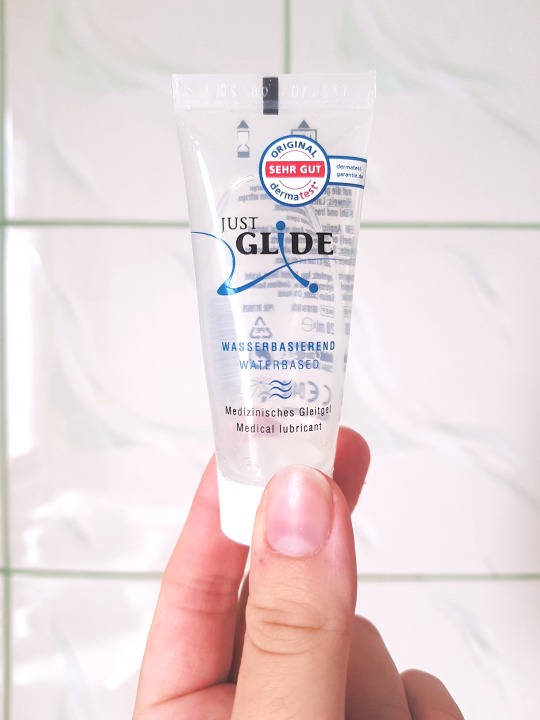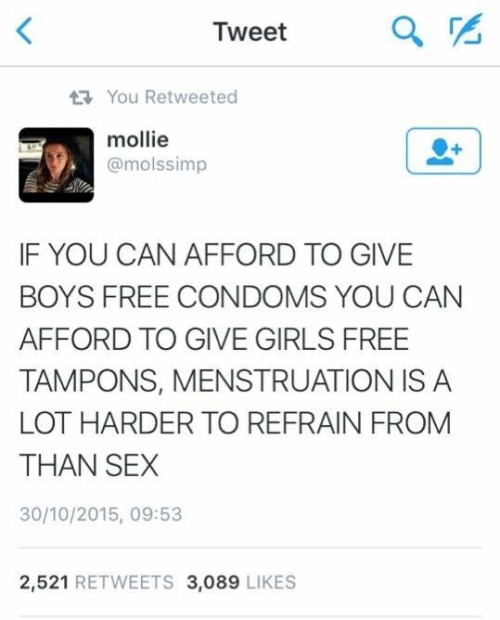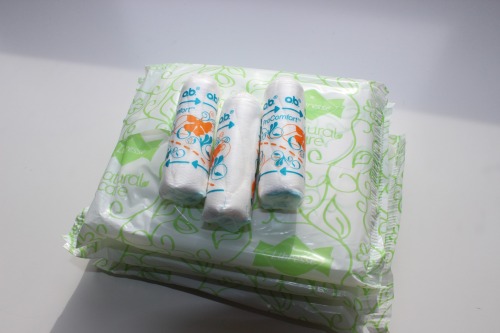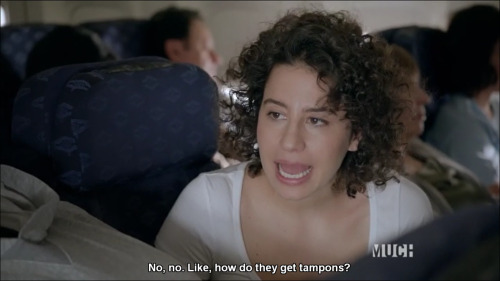#tampons
If you follow me and read my post since last year you may know that I obtained a menstrual cup some time ago. The truth is I haven’t got an occasion to try it… until now, thanks to quarantine.
I needed some time to prepare the cup and of course also prepare myself for trying it. Living in a dormitory was an obstacle for me to do it, so when I started bleeding on quarantine at home I though it was a appropriate day to insert my menstrual cup.
Quick backstory: I got my first period when I was turning 10, so according to my calculations I have used about 3360 menstrual pads till today (for almost 10 years). So continuing counting I will use at least 10080 more until I stop menstruating.
“Tampons, pads and panty liners along with their packaging and individual wrapping generate more than 200,000 tonnes of waste per year, and they all contain plastic – in fact, pads are around 90% plastic!” - OrganiCup
One pad decompose in about 500 to 800 years! And burning them causes highly toxic emissions. So please consider switching to more sustainable menstrual products as:
- Cloth pads (watch this video!)
- Cup
- Periodproof underwear
My first period with menstrual cup:

Day 1 | Although I tried doing this before, it didn’t work out then. “Take your time” - I said to myself and began putting in right place. The first day of wearing a cup wasn’t the most comfortable and I wore a pad due to the insurance. I found very little blood inside the cup in the evening, which surprised me.
Articles and videos that helped me at the first day:
- 7 Things No One Tells You About Using Menstrual Cups
- How to use a Menstrual Cup – In-depth Instructional Video
- First Time Using A MENSTRUAL CUP During A HEAVY Period - Sarah Therese - I love her channel!
- The truth about menstrual cups TMI WARNING | I tried the diva cup - I completely love the girl’s energy :D
Also what I found helpful was medical lubricant, but to be honest I used it only at the first day. I didn’t mention it before but if you want to know, my cup is from the brand calledPerfect Cup;)

Day 2 | I felt really comfortable after wearing a cup at night. Also I didn’t notice any leakage. Although I think the ring was irritating me sometimes.
Day 3 | Again I felt very comfortable all day. I think the cup’s size is appropriate for me.

(sanitizing my cup in hot water while taking shower)
Day 4 | My bottom stomach hurt a bit, I think I put my cup a little too deep. But I reinserted it and then it was okay. In the evening I noticed that the amount of blood inside the cup was low so I decided to take a break of it and try on a cloth pad I sew before.

Day 5 | I stopped bleeding and after wearing a cloth pad for a night I felt a lot more pleased then after using a disposable pad.
Summing up: I loved it from the very first day! The feeling of not having a blood flood inside my pants and having any skin irritation caused by the chemicals inside the disposable pads… Absolutely stunning! Now I feel like: everyone who is menstruating should try that!
Also I have a story here: when I got my cup, I showed it to my boyfriend and he loved it and started playing with it, but when I showed it to my (women) roommates they were like “yuuuck!” and the situation was really shocking for me, because before I hadn’t met anyone who would react that way on a cup…
I’ve also asked some other people what they think about menstrual cups.
- “They are problematic and embarrassing in public toilets.”
- “I’m afraid I can stain something while putting it out.”
- “They are cool. Someday I’ll buy one!”
- “At least you don’t waste money on tampons and pads.”
- “I think it is a good way to reduce your waste.”
- “They seem to be more comfortable than tampons.”
- “In my point of view they aren’t made for me, but I’m not sure, because it seems to be better and more comfortable solution.”
And what is your opinion about menstrual cups?
I will finish with mentioning that there is nothing to be ashamed with talking about your period or using a menstrual cup! Love your body and accept everything about it! You are beautiful and worthy! ♥ ♥ ♥
Free Period: Our OB/GYN Expert Weighs in On New Law for California Schools
Period products will be provided free of charge in public schools across California starting next school year as part of new legislation recently signed into law by Governor Gavin Newsom.
The Menstrual Equity for All Act will require public schools with students in grades six to 12, community colleges and the California State University System to provide the free products in the 2022-2023 academic year.
We asked Alice Sutton, MD, obstetrician/gynecologist at UC San Diego Health, to explain the importance of providing free period products to this population of young women and how a comprehensive approach to women’s health is critical, especially for underserved students.
Question: What are some benefits to having tampons freely available in schools?
Answer: Students experiencing a lack of access to menstrual products, education, hygiene facilities, waste management or a combination of these, may skip school if they don’t have adequate sanitary products, or they may improvise with items, such as paper towels that are not meant for menstrual hygiene.
Period poverty causes physical, mental and emotional challenges. Having menstrual products available in school will help students concentrate on their studies and keep them in class while meeting their health care needs.
Q: Are there concerns about whether there’s enough support in schools to help young women who are menstruating?
A: Young women who are experiencing painful or heavy periods often don’t know that there are safe and effective treatments for these issues. Sometimes the discomfort is bad enough that they miss class or extracurricular activities.
Having a nurse, teacher, coach or other trusted adult in a young women’s life in the school setting provides support and could steer her towards making an appointment with an OB/GYN to discuss options for management, such as lifestyle interventions and medications.
Q: Besides providing tampons, what else should schools be doing to support reproductive health in young people?
A: Appropriate education about the menstrual cycle, tailored to their age-level should be provided. At an even more basic level, some students may not come from homes where they have a parent who they can ask for advice, and so school may be the place where they can find a trusted adult who provides them with accurate information and can point them to appropriate resources.
The American College of Obstetricians and Gynecologists recommends a first reproductive health visit between the ages of 13 and 15. It is a good time to establish care and have a first visit where the adolescent has the opportunity to discuss concerns privately with a doctor. Gynecology visits at this age are tailored to the patient. Topics that might be covered include normal anatomy and normal menstruation, healthy relationships and consent, immunizations, physical activity, substance use including alcohol and tobacco, eating disorders, mental health, sexuality, contraception and pregnancy prevention and sexually transmitted infections.
— Michelle Brubaker
Post link
I was bored so I designed a cool tampon brand I’d actually like, with no pink, purple or flowers. Fucking goddamn flowers… We deserve a badass brand for bleeding every month!
I actually liked the idea so I may update it later and make it better
Post link
The Great Tampon Shortage of 2022
Sometimes when I am grocery shopping, even if I am there just for broccoli, I’ll swing by the aisle where they stock feminine products. Because, even though most of the things that disappeared during the pandemic like toilet paper, yeast, and flour have returned to the shelves, tampons are still in short supply. It’s become a strange fascination of mine, to see the large gap on the shelf, like a missing front tooth, where tampons are supposed to be.
In the last few months, I’ve visited stores in New York, Massachusetts, and California—no tampons. And it’s not just me. Dana Marlowe, the founder of I Support the Girls, which provides bras and menstrual hygiene for people experiencing homelessness, told me that her organization has seen a big drop off in tampon donations. “What’s been going on for a couple months is that organizations call us up and say, ‘we need tampons,’ and we go to our warehouse and there’s nothing there.”
[Quick side note: We learned during the formula shortage that some men are a little rusty on how women’s bodies work, so allow me to briefly explain. Women get their periods when the lining of their uterus breaks down every month. Tampons are manufactured pieces of fabric that about 40% of women in the U.S. use to absorb the blood.]
For the first six months of this year, Marlowe’s group received just 213,075 tampons, half as many as during the same time last year and 61% fewer than 2020. Marlowe texted me photos of aisles in Indianapolis and Silver Spring, Maryland that were stocked with menstrual pads but empty of tampons.

Tucked away on a forum for DC-area moms, I found dozens of women complaining in April about not being able to find tampons. A similar discussion was happening on Reddit, where one poster said she checked eight stores looking for her preferred brand. Amazon sellers were taking advantage of the shortage; in January, one box of 18 Tampax listed for $114, about six dollars more—per tampon—than women usually pay.
“To put it bluntly, tampons are next to impossible to find,” says Michelle Wolfe, a radio host in Bozeman, Montana, who wrote a piece on her radio station’s website in March about not being able to find tampons in Montana. “I would say it’s been like this for a solid six months.”
Normally, a shortage like this might not be that surprising. We’ve all heard the complaints about the supply chain issues. Diesel is expensive! The ports are clogged! No one wants to work! But then there was that massive shortage of baby formula that left children hospitalized and mothers raging, and the (male) head of the FDA admitted that the agency’s reaction was “too slow.” Many womenspeculated that if men had to breastfeed, there would be no formula shortage.
Which made me wonder why products that women need were getting so hard hit by supply chain issues. After all, there’s the shortage of tampons, and formula, and, in the UK, a shortage ofHRT, a drug that’s used to treat the symptoms of menopause. Are bad decisions being made at companies run by men that are affecting the supply of products for women?
Laws of supply and demand
Ask Procter & Gamble why it is so hard to find tampons right now, and the company will blame Amy Schumer. P&G, which makes Tampax, America’s most popular tampon brand, launched a new ad campaign with the comedian in July of 2020. Since then, “retail sales growth has exploded,” spokeswoman Cheri McMaster says. Demand is up 7.7% over the past two years, and the company is running its Auburn, Maine Tampax factory 24/7 to meet demand. (All of P&G’s tampons are made in one factory in Maine; all of the tampons of Edgewell Personal Care, which makes the brands Playtex and o.b., are made in a factory in Dover, Delaware.)
But I find it a little hard to pin the tampon shortage on Amy Schumer. Who watches commercials anymore? And even if the Tampax ads were a hit, that explanation doesn’t account for why other brands of tampons, including Playtex and o.b., were also out of stock. The other thing that changed in 2020, of course, is that there was a global pandemic and people stocked up on supplies because they were worried they’d run out. This increase in demand came at a time when the supply chain for tampons, like the supply chain for just about everything else, became disrupted by factory closures and port delays.
P&G said in its most recent earnings call that it was still having trouble sourcing raw materials for feminine care products, getting them to the places that need them, and getting products on trucks to retailers. The startup TOP The Organic Project makes tampons in Europe, and co-founder and CEO Thyme Sullivan says the cost of getting its tampons to the U.S. is up 300% from last year. The company started flying, rather than shipping, the biodegradable wrappers for its feminine care products from Italy because shipping has become so difficult and expensive.
Edgewell Personal Care experienced a severe staff shortage at its Dover facility with both employees and vendors, the company says. Tampons are Class II medical devices, which means that because of quality control regulations, companies can’t put just anybody on the assembly line, so production lagged demand. And the raw materials that go into tampons—cotton, rayon, and sometimes pulp and plastic for applicators—have been some of the most in-demand raw materials throughout the pandemic as they’ve gone into medical products like personal protection equipment. As demand soared, supply shrank.

Thyme Sullivan, the co-founder of TOP the organic project, which sells period products, ran the Reebok 10k in Boston dressed as a tampon.
Courtesy Thyme Sullivan
Increased demand, staffing shortages, raw material shortages—none of these factors are unique to tampons. Yet what makes the tampon shortage so persistent and problematic is that unlike most other items that the supply chain has made it hard to access, tampons are not something women can stop buying until supplies return. You may be annoyed that your couch delivery is delayed or that you still can’t find your favorite running shoes, but you can wait—or buy something else. Women get their period every month, and if they’ve used tampons for their entire adult lives, they need tampons.
The fact that women will keep trying to find tampons, even if the shelves are empty and prices are rising, has allowed companies to increase the prices of feminine care products. Procter & Gamble said in April 2021 that it would increase prices on baby care, feminine care, and adult incontinence products. Then, in April of this year, it said it would again raise prices on its feminine care products. P&G posted its biggest sales gain in decades in the most recent quarter, and the amount of money it made from sales in its feminine care division was up 10%.
“Tampons are a staple product—a life necessity,” Lu says. “If you look at the pricing strategy for the big players, they will consider more price increases for these necessity products.”
Overall, the price of feminine care products in the U.S. has risen 10.8% from a year ago, according to scanner data from Nielsen IQ, which tracks the prices from point-of-sale systems. Feminine care was one of only two categories in Nielsen’s health and beauty data where prices were up 10% or more from a year ago for the past six months. (The other category was deodorant.) Prices for sexual health products were up just 4.1%, and prices for oral hygiene goods rose 4.3%. Products made of cotton have not experienced as steep a price growth. Cotton balls are up 8.2% over the year, and gauze pads are up 7.8%, the Nielsen data shows.
Why shortages of products for women persist
In the UK, hormone replacement therapy products for women are being rationed. That’s even though pharmacy staff began reporting supply shortages even before the pandemic. Nonprofits and local government agencies began warning of infant formula shortages in November of 2021. But after shutting down Abbott’s formula plant in February 2022, the FDA did not announce it was taking steps to improve the supply of formula until May. The shortage is now expected to last through the summer.
And it’s still hard to find anyone doing anything about the tampon shortage, even though tampons have been hard to find for the past six months. Even stranger, aside from a few pockets of the Internet where frustrated women are venting about not being able to find tampons, nobody’s talking about the great tampon shortage of 2022. “I kept asking myself—am I going crazy? Because I went to so many stores and couldn’t find anything,” Eal Ganott, a mother or two in Queens who found validation in a Reddit thread.
Though many women have been affected by the low supplies, there’s such a lack of information about what is in stock at local stores that there’s no way to put a number on the severity of the national shortage. CVS said, in a statement, that it was working with suppliers to ensure that customers had access to these items, but was not able to provide any data about out-of-stocks. Wolfe, the radio host, got dozens of emails from women who were also hit by the tampon shortage, since hers is the only piece online that mentions it. “It’s a little taboo,” she says. “Who the heck wants to talk about tampons?”
The taboo nature of talking about tampons and periods has made it hard for many people to get menstrual products—the U.S. military doesn’t provide tampons to women stationed overseas (though it does provide Viagra) and women cannot buy period products using food stamps. One in four women now experience period poverty, meaning they don’t have access to menstrual products, up from one in five before the pandemic. That’s what has motivated some cities and states to mandate that schools provide free menstrual products, which may also be driving some of the demand for tampons.
The shortage is making some women angry that this simple product is so hard to find, especially at a time when the Supreme Court appears poised to rule on Roe v. Wade in a way that could allow states to mandate what women do with their bodies. “Why isn’t anyone speaking up about this?” Diamond Cotton, a 32-year-old mother of two girls, told me. “The government wants to put a strain on women having abortions, but they don’t know what a woman has to get through.”
Thyme Sullivan, the TOP Organic Project CEO, worked for 27 years at consumer packaged goods companies including PepsiCo and Nestle before starting her company, which makes organic period products. She says that the gender of the people running the country—and most of America’s companies—could help explain the tampon shortage. After all, shortages of toilet paper, cleaning products, and even masks and gloves did not last very long at the beginning of the pandemic.
That could be because the people making procurement and supply chain decisions needed toilet paper and cleaning supplies, or could at least relate to the families who needed them. Many of the people making those decisions for feminine care products do not themselves use them. The CEO of Procter & Gamble is a man, as are the CEOs of Edgewell and Unilever. (The CEO of Abbott Nutrition is a man, as is the UK’s Health Secretary, whose department is responsible for getting HRT to women using the National Health Service.
“I challenge you to go to a business that doesn’t have hand sanitizer,” she says. “That happened overnight.” But, she says, there has been no such push by businesses or the government to solve the tampon shortage. Even before the pandemic, she would go to meetings and ask male leaders whether they were carrying a tampon in their sleeve or if they had ever missed a meeting because they couldn’t find feminine products.
There isn’t a lot of discussion about a tampon shortage or a rush to solve it because the issue doesn’t directly affect the people in charge, Sullivan argues. “It is just a matter of who is asking for it. And who are the decision makers,” she says. “It’s why we need to bring men into the conversation, because in many places, they’re still the decision-makers, and this wasn’t on their radar.” (She and co-founder Denielle Finkelstein recently ran a 10K dressed as tampons to call attention to period poverty.)
Both TOP The Organic Project and Lola, which are both women-owned feminine products companies, said that there have been no shortages of their products since the pandemic began. Neither company has raised its prices, even though they face the same supply chain issues as everyone else.
This information will only be of interest to some of you. To me, it was a fucking revelation.
Here it is: You can buy those big-ass Ultra o.b. tampons (the purple ones!) that are nearly impossible to find in stores on drugstore.com.
Everything to Know About the Tampon Shortage
okay i tried to find an article was wasnt gendering shit to high hell, i THINK this ones fine but. well, luckily i have mostly reusable stuff now and with birth control i rarely even have to worry anymore, but this aint good
if you havent tried reusable stuff yet and youre able, nows probably a good time to try em out before a possible rush. i definitely reccomend menstrual cups, recently tried making myself some reusable pads which work pretty well, and a lot of people use period undies (but be careful about these types because as you might have seen, some brands like thinx and kinx have been shown to have some nasty chems called PFAs which can cause huge issues).
If you’re handy with a needle, you can make your own reusable pads, and maybe even check if ppl around you would want some too. Tons of tutorials online, you can make em as simple or as fancy as you want, ymmv of course but its an option! mine look like cute lil bats and theyre fun.
ill say the cheapest option for anyone wondering is the menstrual cups, because honestly you only need one as opposed to a set of them like you might need with pads.
of course though reusables have inherent issues accessibility wise, like being way more expensive on first purchase even if they save you money in the long run in a classic vimes boots, and the cleaning part can be more difficult if you dont have access to ways to boil water to sanitize the cups or sinks/washing machines to clean the pads and stuff, also some people might just not vibe with the current options, so i aint gonna say “yeah no its SO EASY just SWITCH”.
still, if you can, maybe look into it? IDDK how many people switching itd take to lessen the strain on the supply, but at the very least it would benefit you personally. and hey, if you do switch and you still got a supply under your sink you could maybe check in and see if anyone needs em. I kinda wanna see if i can donate some i got leftover in light of this, though im not sure if the box being opened means i cant, but its at least worth checking.
(WARNING: LINKS MAY HAVE CISSEXIST OR GENDERED LANGUAGE. PLEASE BE CAUTIOUS WHILE VIEWING THEM. IF YOU WOULD LIKE INFORMATION FROM THE SITE, CONTACT ME AND I WILL PROVIDE YOU WITH DIRECT QUOTES AND ANY OTHER INFO YOU NEED WITHOUT THE IGNORANT LANGUAGE)
Preparation:
-Always keep 2-4 pads/tampons (or a cup) in your backpack, whether you’re on your period or not.
-Keep a sweatshirt or hoodie in your locker incase of a leak.
-Wear dark pants. Leggings and yoga pants. No faded jeans, no gray sweats.
-Carry tissues for wiping up stains.
-Consider keeping a pair of underwear and a pair of leggings (or other thin pants) in a medium-to-large Zip-Lock baggie in your backpack along with the pads/tampons/etc. In case of a leak, you can change. The baggie is for your stained clothing.
Transportation:-Tuck your pads/tampons under the band of your panties, on the side/at the hip. Pull your pants over them, and you’re good to go.
-If you use tampons, take a look at U by Kotex CLICKs. They’re about an inch shorter than regular applicator tampons, and therefore easier to store. ( <a href=“http://www.kotex.com/na/products/u-by-kotex-click-tampons-regular/15949”>http://www.kotex.com/na/products/u-by-kotex-click-tampons-regular/15949</a> )
-If you use cups, look into the Lily Cup Compact, which pops down to fit inside a small, plastic case, perfect for on-the-go. ( http://www.intimina.com/en/lily_cups)
-If you use pads, try out Always Infinity with Flexfoam. Absorbant, comfortable, and incredibly thin. ( http://always.com/en-us/shop-products/menstrual-pads/infinity-pads-with-flexfoam)
-If you wear uggs, supplies can fit nicely inside them.
Nights:-Lay down a towel to protect your sheets from leaks.
-If you sleep on your back, the pad has to be farther back, too.
-NEVER SLEEP IN A TAMPON.
-Wear “long” pads to cover the entirety of your underwear.
Showering:-Have a pad already in your underwear so you can put it on right away.
-Insertable products can be worn in the shower.
-Rinse your privates with lukewarm water, and NO SOAPS, DOUCHES, OR WASHES.
-Use a dark towel.
-Shower more often than usual.
-If you do leak blood on the floor, it can be wipes up with a Clorox or Baby wipe. No big deal.
Stains:-Cold water gets stains out, hot water sets them. If you use warm water on your stains, they’re more stubborn than before.
-Ice can help too. Its literally a stick of really cold water.
-They happen to everyone, not just you, so if someone laughs at you, death glare them or wipe blood over their forehead and shout “SIMBA!” (Just kidding, DO NOT DO THE SIMBA THING)
-As mentioned above - sweatshirts and long shirts can cover stains, stray away from light clothing, and carry spare clothes with you. Also consider carryinf tissues in your pocket. if its on your chair, you might be able to quickly wipe it up.
Men, Guys, and Boys:-Wear briefs, put the pad in the briefs, and put boxers over the briefs. No one will see your pad, plus it gives you more layers (which means more layers a leak has to go through before it’s visable).
-If you’re comfortable with insertable products, a menstrual cup can often be worn for 12 hours before it needs a change. This means less public-bathroom changing.
-Clue is a period-tracking app that is red and white. That’s right. No pink. Ever.
-If you’re worried about buying supplies at the store, fake a phone call:
“No, no, I’m there…I don’t see that…wait, nevermind. Okay. Yeah, I’ll be home in ten minutes. Do you need anything else?
Alright. Bye.”-You are no less of a man because of this. Cis guys go running at the mere mention of a period, or a pad, or a tampon. You live it. If anything, you’re more manly than them. Don’t let anyone tell you otherwise (if they do, punch them in the face and offer them a tampon for their nosebleed).
Thank you, this is awesome!!
Reblog in memory of every expensive pair of underwear destroyed beyond salvation by period blood.
Me, 17 years old:
*never had a boyfriend*
*never kissed a guy*
*never sent nudes*
Period:
*1 day late*
Me:
“Omfg I think I’m pregnant.”
Me: *wears white jeans*
All the blood in my uterus:

*Wears new pants*
Period:

Sh¡t About Female Anatomy/Being a Female School Failed to Teach Me
A lot of these links are to this TikTok from @heatherlrex, which women are using to inform each other on things that are available to us. I definitely didn’t include everything from there in this list, so I highly recommend going and reading through the comments of that TikTok. I may update this as I age.
DISCLAIMER: This isn’t actually medical advice. Do your own research.
- Women don’t urinate from their vagina. There’s actually a third hole down there called the urethra.
- (Was anybody gonna tell me that, or was I just supposed to find out as a 20 year old on TikTok myself?)
- Starting at the age 21 and repeating every three years following that, you’ll need to get a pap smear to ensure you don’t have cervical cancer.
- During these tests, the doctor will ask you to undress from the waist down and cover yourself with a paper sheet for privacy. You’ll sit on the edge of the bed and place your feet in “stirrups,” and the doctor will insert a speculum into your vagina and scrape cells (hopefully gently) from your cervix and send it to be tested. It may hurt the first time. If it’s hurting, you can ask for a different sized speculum. You can also ask to insert it yourself.
- If the test comes back abnormal, the doctor may biopsy your cervix. They’ll use a metal object to basically hole-punch your cervix and secure a chunk of your flesh. They don’t offer to numb you, BUT YOU CAN REQUEST TO BE NUMBED! They may cauterize it. You may bleed (bring a pad or panty-liner). If they didn’t get enough of your cervix the first time, they may do it again. Some male doctors will tell you you don’t need to be numbed because there aren’t any pain receptors in the cervix. The women who have ended up unable to walk from the pain of cervical biopsy strongly disagree and recommend you laugh him out of his office and find a different doctor. Your doctor may tell you it’s not possible to be numbed; find another doctor.
- Pads and tampons have expiration dates.
- EXTREMELY PAINFUL PERIODS ARE NOT NORMAL! It could be endometriosis or adenomyosis. Go see an endometriosis specialist.
- If you’re in a hospital and no one is listening, you can request a patient advocate. You can demand a copy of your medical records to see what they really think and see about a payment waver if you can’t afford it. If you object to a course of treatment and feel like you aren’t being heard, ask for the hospital’s ombudsman. If you’re at the doctor and they’re not listening, tell them to note on the chart that they refused you and why.
- If you can’t afford biopsies, mammograms, medical bills, pap smears, ultrasounds, etc., there are well women programs to help. Even if you have private insurance.
- Planned Parenthood isn’t just a place to get abortions; it’s … an organization that helps you plan for parenthood.
- If you’re going to push out a baby, you can deny being induced into labor early. You don’t have to let the baby out of your sight — no matter what they say. You can deny cervix checks, can eat while you’re in labor, can get postpartum physical therapy to help heal the pelvic floor, and can receive government assistance while on maternity leave. You don’t have to give birth on your back, which is actually not the best position anyway. You can also write a long birth plan and demand they need consent for everything before doing it (have everyone who enters the room sign it). Pediatricians have samples of everything — diapers, wipes, formula, Tylenol — you can ask for them. You can have postpartum pre-eclampsia after you get home; keep an eye on your B.P.
- Also,the Husband Stitch is a real thing that happens that I’d never heard of before. It’s an extra stitch (or more) added when they’re repairing an episiotomy following childbirth that’s thought to make intercourse more pleasurable for the male partner but results in severe paint for the female as scar tissue doesn’t stretch. It’s genital mutilation and, without your consent, malpractice. It can result in new tearing, disfigurement, emotional trauma, incontinence, infection, nerve damage, and severe pain during menstruation as well as a negative impact on your relationship with your partner. It may require reconstructive surgery, which can leave you out of work and harm you financially.
- If you’re getting an I.U.D. put in, take cervix ripening medications the day before to help with the pain. Also, get an ultrasound guided insertion to ensure it’s done properly.
- If you’re going under anesthesia, make sure to read your documents and deny being used to practice pelvic exams. Your signature will be used as proof of consent, and they may do it even while you’re out for a procedure that has nothing to do with that. Your guardian or someone else may authorize it while you’re under.
- In surgery, you can ask for an all female staff in the operating room.
- Women with A.D.H.D. don’t exhibit the same symptoms as men and are likely to be misdiagnosed with anxiety and/or depression.
- Heart attacks also present differently for women.
- You can be allergic to your partner’s fluids.
- If you have an allergy to latex, you might be allergic to surgical glue, avocados, cloves, and your menstrual cup.
- It’ssafer to take the elevator than the stairs. Not only because more people die on the stairs every year than they do in an elevator, but there aren’t cameras in the stairwell and it’s a rape hotspot.
- The dress code is not there to keep boys from getting distracted; it’s there to perpetuate the idea that women are in control of men’s actions.
- If your feminism involves being better than men, you’re not a feminist; you’re a misandrist. I don’t want you in my circle; please block me on all my social media and don’t go out of your way to talk to me I.R.L.
- Feminism is not about being strong the way men are strong; it’s not anything you have to change about yourself. It’s about demanding a seat at the table as you are, notaboutstealing men’s seat. If you’re a teenager (or adult, I guess) deciding to be a feminist and to be a strong woman and the best way you can think to do that is to throw away all your pink, your makeup, your nail polish, your skirts, your dresses, and your long hair, I want you to look up internalized misogyny and reevaluate your perception of feminism.
- Throw out any book where the boy tells his love interestshe’s“not like other girls.” This is just another way women are pitted against each other; there’s nothing wrong with other girls.













